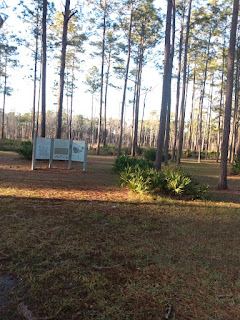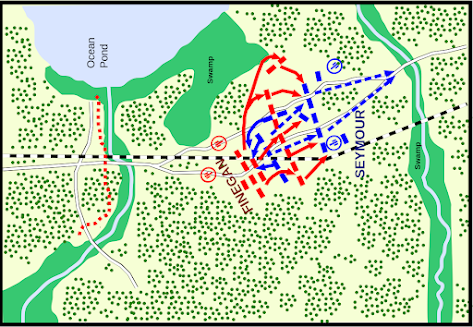 |
| Olustee Battlefield, Feb 2021 |
With five thousand troops on each side, Olustee was the biggest battle fought in Florida during the Civil War. Most of coastal Florida had fallen to the United States by 1862, but the interior remained under Confederate control. In Feburary, 1864, against orders, General Truman Seymour launched an expedition against the Florida state capital, Tallahassee. On February 20th he came up against rebel forces in a marshy pine forest.
Seymour believed he'd only be facing state militia, troops he'd had little trouble with in the past. Unknown to him, the militia had been augmented by several thousand veteran troops sent down from Charleston. Confederate commander, General Joseph Finegan, tried to lure Seymour into attacking an entrenched position but this failed. Instead, both sides fed their reinforcements into the battle until ultimately the Union line broke. Despite the small size of the battle, based on the proportion of casualties, Olustee was one of the fiercest fights in the Civil War. The Union lost over 200 men killed, over 1,000 wounded, and 500 missing or captured out of about 5,000 soldiers. The Confederacy lost almost 100 killed and about 850 wounded.
Finegan made a final effort, sending troops against Seymour's retreating force but was held off by the 54th Massachusetts Infantry Regiment (the regiment featured in the movie Glory (1989)) and the 35th United States Colored Infantry Regiment. Later, the 54th pulled a broken down train with wounded on it over three miles. Then, with the aid of horses, they towed it another ten miles back to Jacksonville.We took a walk around the site, and had to take a couple of serious detours and get a bit soaked. As I said, it's a marshy area and the storms that had devastated Texas had dumped serious rain on Florida for several days. The problem with the Olustee Battlefield is that while still undeveloped and relatively unchanged terrain, the vegetation has changed. The battle was fought in open spaces in a pine forest near the swampy shore of Ocean Pond. Today, that same are is covered with saw palmetto. If I remember the park ranger's talk correctly, fires took out the pines and the saw palmettos moved in and took over. Still, walking the quiet, empty woods around the same time of year as the battle, it was possible to imagine what it must have been like when it was taken over by rifle and cannon fire, the shouts of attacking troops and the screams of the wounded.
We spent an hour of so walking around the site, got back in our car and headed west. This was the first of seven battle sites we'd visit on the Great Road Trip of the Plague Year.





No comments:
Post a Comment
.